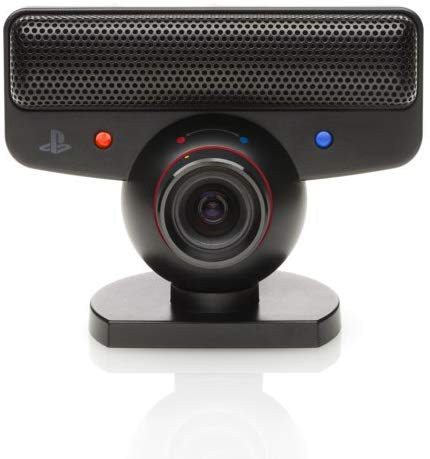Almost exactly two years ago to the day, we published an article showing how microphone arrays performed against a single USB microphone, and the latter started to have a poor wake word detection success rate at around 3 meters array even in a silent room, and it got worse with white noise or background music, while the microphone arrays would pick up the wake word with a much higher success rate in all conditions.
The price of smart audio development kits varies a lot from $500 for Intel Speech Enabling Developer Kit to $129 for an Allwinner R18-based 3-Mic Far-Field Amazon AVS Development Kit, and $99 for ReSpeaker Core v2. If you’ve already got a Raspberry Pi 3/4 board, you can get cheaper options such as ReSpeaker 4-Mic Array for $25, but nothing beats the price of Sony PS3 Eye camera that comes with a 4 microphone array and sells on Amazon for around $7.5. You may even already have one, so no need to spend extra money.
 PS3 Eye was actually part of the article we published two years ago, and the camera performed well in comparison to more expensive development kits. The subject came back recently in the comments section of a post about Tmall Genie smart speaker, via a post by Michaela Merz which compares PS3 Eye against Respeaker Mic Array v2.0 ($69), and explains how to setup PS3 Eye’s microphone array in Raspberry Pi 3.
PS3 Eye was actually part of the article we published two years ago, and the camera performed well in comparison to more expensive development kits. The subject came back recently in the comments section of a post about Tmall Genie smart speaker, via a post by Michaela Merz which compares PS3 Eye against Respeaker Mic Array v2.0 ($69), and explains how to setup PS3 Eye’s microphone array in Raspberry Pi 3.
Let’s show the configuration part
- Edit /etc/udev/rules.d/70-alsa-permanent.rules to make sure the PS3 Eye USB mic array is properly detected:
123SUBSYSTEM!="sound", GOTO="my_usb_audio_end"ACTION!="add", GOTO="my_usb_audio_end"ATTRS{idVendor}=="1415", ATTRS{idProduct}=="2000", ATTR{id}="VOICE" - Edit ${HOME}/.asoundrc ALSA configuration to use VOICE device:
1234pcm.array {type hwcard VOICE}
adjust the gain:
1234567891011121314pcm.array_gain {type softvolslave {pcm "array"}control {name "Mic Gain"count 2card 0}min_dB -40.0max_dB 10.0resolution 80}
and downmix all 4 microphone audio streams into a single one:
12345678pcm.cap {type plugslave {pcm "array_gain"channels 4}route_policy sum} - Use “cap” stream to record audio using what sound-to-text solution you are using.
So how well does PS3 Eye work compared to ReSpeaker mic array? Michaela goes into more details on her blog post with samples, and insights, but the conclusion is the main takeaway:
Don’t expect wonders. If your STT like Sphinx or Kaldi doesn’t understand you with a cheap Sony Playstation Eye, it will most likely not understand you even with the ReSpeaker attached.
One advantage of the ReSpeaker board is that it works in a 360-degree circle around the device, while PlayStation Eye is more directional, so depending on where and how far you stand it may not pick up audio just as well.
Thanks to Jon for the idea.

Jean-Luc started CNX Software in 2010 as a part-time endeavor, before quitting his job as a software engineering manager, and starting to write daily news, and reviews full time later in 2011.
Support CNX Software! Donate via cryptocurrencies, become a Patron on Patreon, or purchase goods on Amazon or Aliexpress




